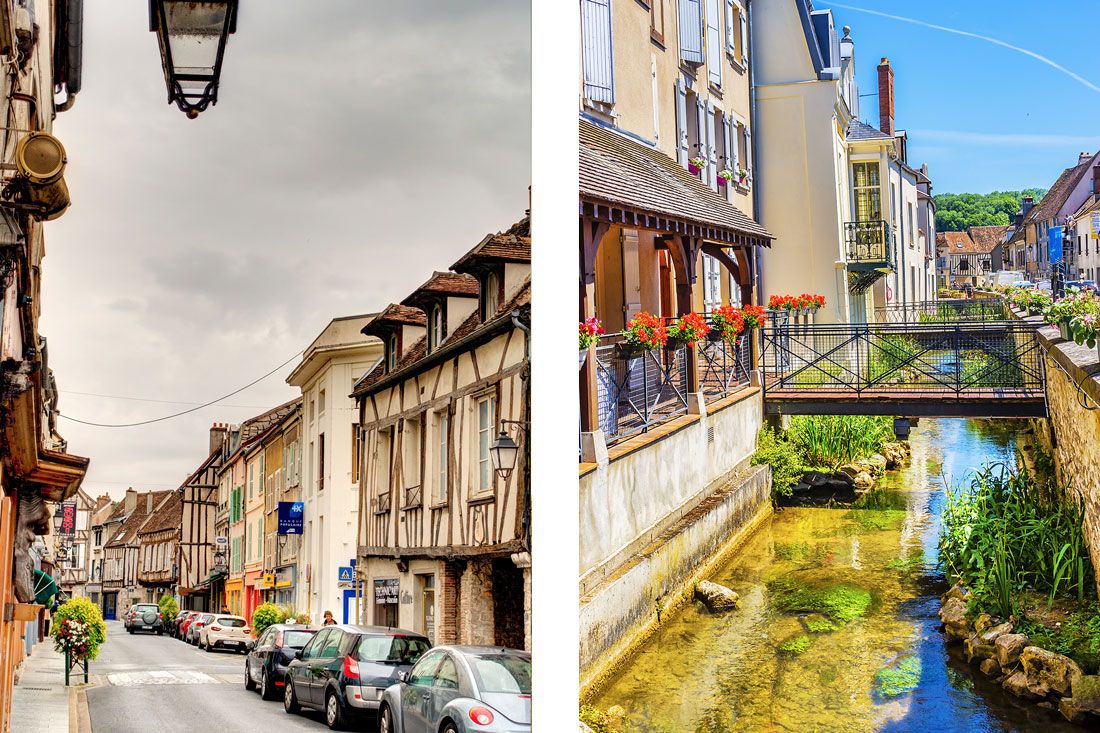Even if you land in Paris and don’t have the inclination to spend time traveling around the country, this list of places will be of use to you as they are all reachable for day trips from Paris. Having said that, it’s really worth trying to spend at least one night.
Auxerre
- Getting there: by train from the Gare de Bercy station in Paris. The journey is just under 2 hours and costs €30.00 one way.
- Why visit? For its huge medieval cathedrals, to taste the local steak tartare and then tell your friends about how you weren’t just in Paris, but in Burgundy too.
Auxerre is a historic town. If you can recall any of your history lessons from school about the European Middle Ages (or if you’ve read any of the novels by Alexandre Dumas), then you’ll no doubt enjoy a visit to Auxerre. The picturesque town sprawls over one of the banks of the River Yonne, and it’s from this riverbank that you get the best views of the famous Abbaye de Saint-Germain d’Auxerre, a splendid example of medieval gothic architecture.
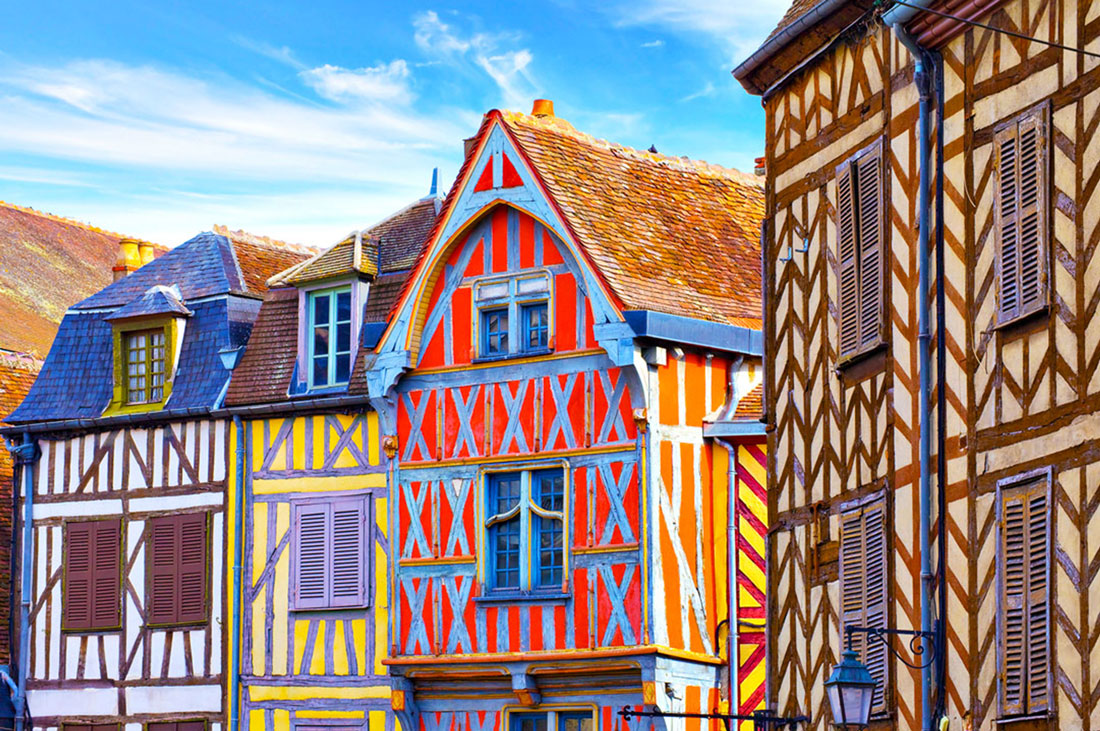
According to legend, the Abbey was founded back in the 5th century but was often rebuilt and altered in appearance. Frescoes from the 9th century survive to this day, and they are said to be the oldest in France. You can go and take a look at them if you book a 40 minute guided tour online, in advance – which costs €7.00 per person and takes place in French.
In addition to a visit to the Abbey, a stroll around the pretty little streets is enchanting as you admire the colorful half-timbered buildings where the beams, frames, and supporting structures jut out from the main structure of the house.
The Cathedral of St Étienne deserves special attention. The current building dates back to the 13th century, but there has been a church here since the 5th century. Then, as you continue your walk around the town, look out for the church of St-Pierre, which is built in a different style to both the Abbey and St-Étienne since it only dates back to the 16th century and its style is late gothic with elements of classicism.
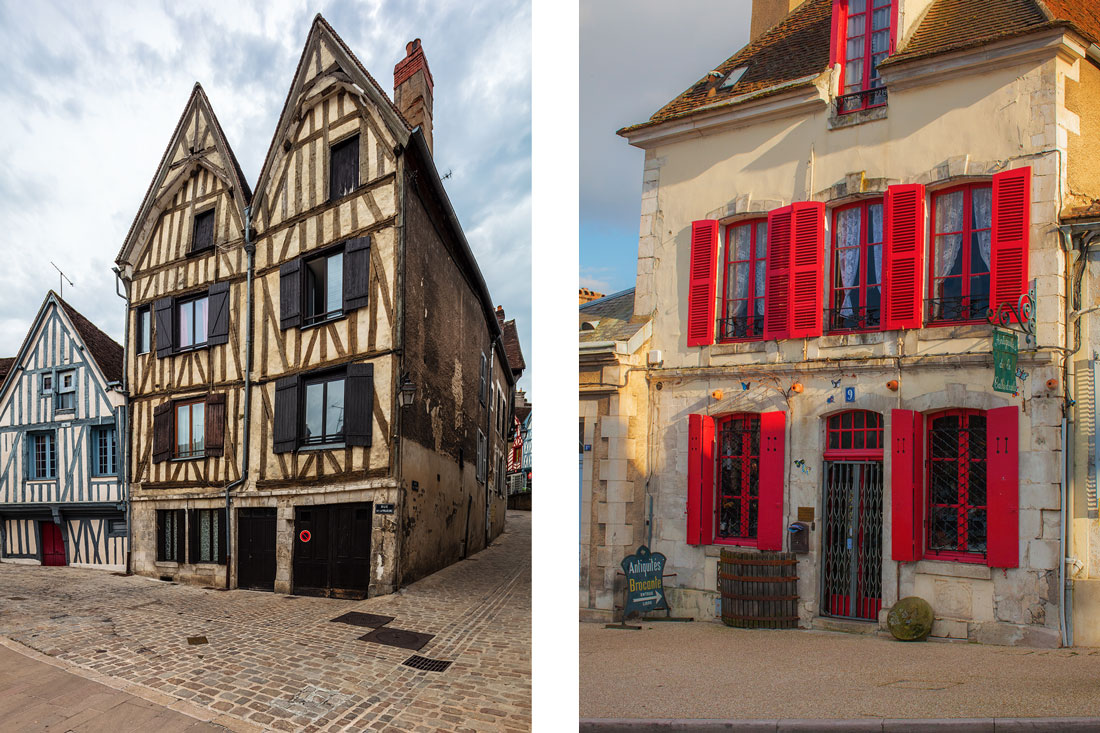
Photo: lahayestock/Shutterstock
One of Auxerre’s best-known sights is the fountain with its statue commemorating Cadet Rousselle, about whom a song was written, which became famous around the time of the French Revolution. This is where most of the shops and cafes are to be found. Try any of the restaurants, they are all good, like Le Frascati, where a meal for two costs around €50.00. Don’t just try the normal offerings, why not try something a bit more daring like the tartare – spicy raw meat with a raw egg mixed in. I tried it, probably won’t again, but it wasn’t terrible.
Where to stay
Montargis
- How to get there: by train from the Gare de Bercy station in Paris. The journey is just over an hour and costs €10.00 one way.
- Why visit? See French Venice with your own eyes.
This little town, located only just an hour away from Paris, is called the Venice of the Gâtinais (“Gâtinais” was a historical region in the Centre-Loire Valley area). When you get here, you will immediately understand why it has this nickname; it’s thanks to the number of bridges that cross the many canals, all in different shapes and sizes. One of the bridges, named after Victor Hugo, was built by Gustave Eiffel – and is very similar in style to his tower in Paris.
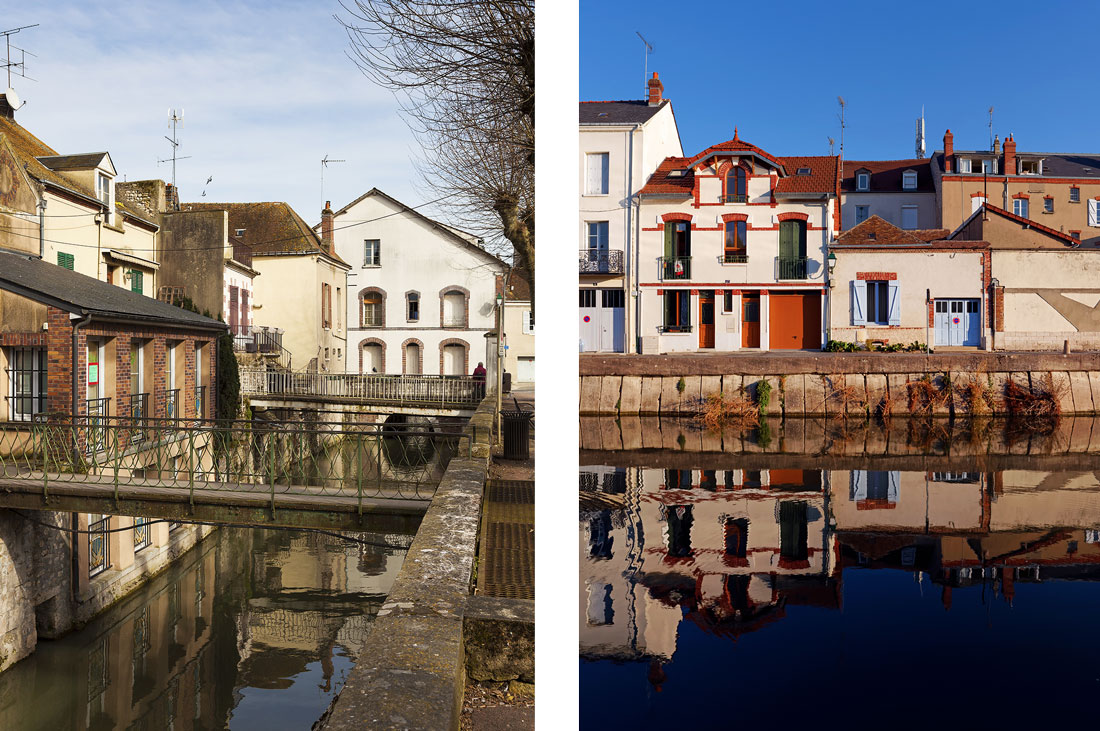
The ancient Renaissance=style Chateau de Montargis looms over the town. If you really want to, you can have a guided tour, which is the only way to get inside, but you have to organize this well in advance through the local tourist office; it’s easier just to take a walk around the exterior and admire the historic center from above. Montargis is quite a modern town, but its old center has kept its medieval charm and color.
As you walk around the town, make sure not to miss the Église de Ste Marie-Madeleine, which was started in the 12th century and was rebuilt in the 16th century. The stunning stained-glass windows from the early 19th century grab your attention straight away.
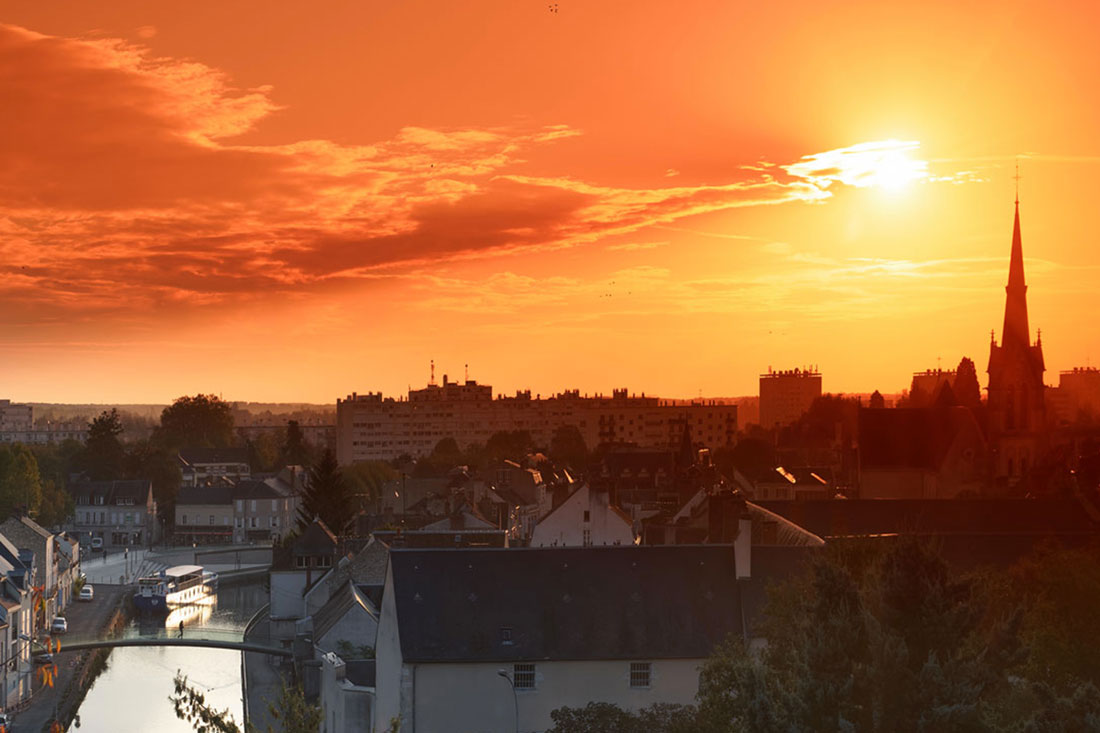
Not far from the church, you will come across the École du praliné – Mazet Factorie. This place is a monument to the local delicacy – sugared almonds, and they sell every possible permutation and combination, some of which you can try. This is not an inexpensive pleasure as a small bag will set you back around €10.00, but what better souvenir? If you still have the energy and head for any of the nearby supermarkets, you can pick up similar offerings for around €3.00-€4.00 cheaper.
If you fancy a snack, you can pop into any of the local bakeries for a delicious croissant and cup of coffee (around €5.00). If you would like something more substantial, try L’Antre Nous with its good range of steaks and seafood. A meal for two comes in at around €60.00.
Where to stay
Provins
- Getting there: by train from Paris Est to Nangis where you change onto another train to Provins. Journey time: appr. 1.5 hrs, ticket costs €15.00 one way
- Why visit? Go back in time to the European Middle Ages
Provins is one of Europe’s best-preserved medieval towns. During the Middle Ages it was the capital of the Champagne Region (now the town is located in the Région Île-de-France). Today, the town is on the list of UNESCO World Heritage Sites thanks to its multitude of buildings dating back to the 11th-13th centuries. This is abundantly clear given the number of school groups you see here. Each day dozens – even hundreds – of French schoolchildren visit from all over France.
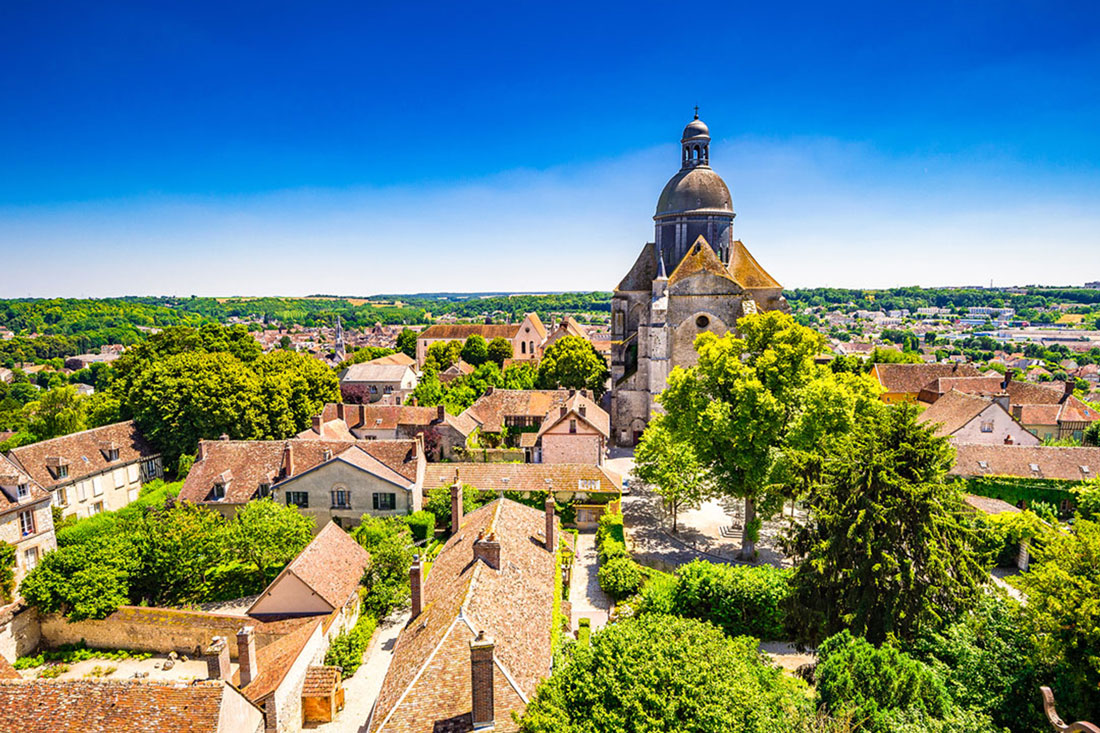
The main site of interest in Provins is its fortress, built between the 13th and 14th centuries, and still intact today. The walls extend over 1200m and have 22 towers.
You should definitely try to go up the 12th century Tour César (Caesar Tower) (€4.30). It once served as a prison and was taken by the English during the Hundred Years’ War. There are some spectacular views over the central part of the town.
Another attractive location in Provins is the 12th-century church of Saint-Quiriace, which was visited by Joan of Arc in 1429, as is testified by a commemorative plaque on the façade.
Take a walk in the outskirts of Provins – the small streets with stone and half-timbered houses are really pretty. This is a very photogenic place, and your social media accounts will come alive. For lunch, why not try the colorful little restaurant La Table St Jean with its great range of traditional French dishes (including foie gras). Order the strawberry tart for dessert – this place is famous for it. The average check comes in at €50-€60.00 for two.
Where to stay
Hotel The Originals Aux Vieux Remparts
Orléans
- Getting there: by train from Austerlitz to Les Aubrais, the name of the station at Orléans. Journey time is about an hour and costs €10.00 one way.
- Why go there? To spend time in the town where Joan of Arc had her visions and to see the Cathédrale de Ste-Croix, almost identical to Notre-Dame.
This is another town that has witnessed great events in the history of France. Even if you are no expert, you are bound to have heard of Joan of Arc, the Maid of Orléans. She headed up the troops and freed Orléans from a. seven-month occupation by the English during the Hundred Years’ War. A monument to her has been erected in the town’s central square, Place Martroi. This is a good place to start your walk around the town – and if you have kids with you, you might want to let them have a go on the carousel, which is on the square (€2.00).
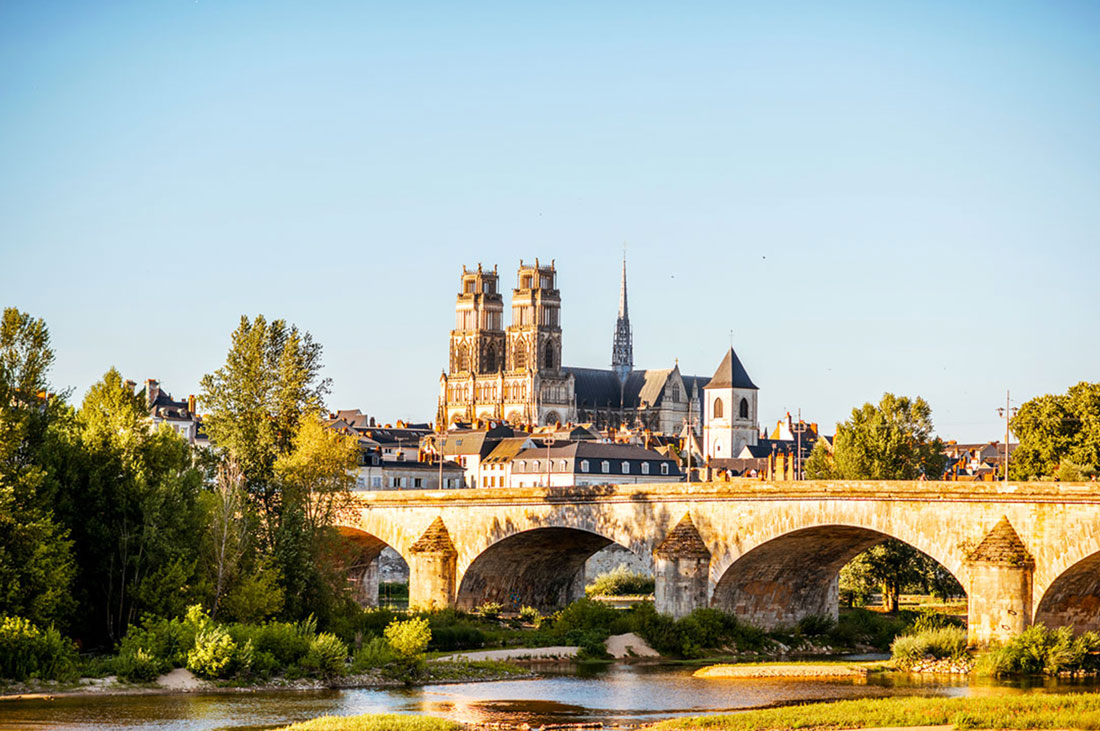
Not far from the square, in a pretty Renaissance-style building, is the Orléans Museum of History and Archaeology. Part of the exhibition is dedicated to the deeds of the Maid of Orléans, and if you find yourself here on the first Sunday of the month, the museum is free to visitors; otherwise, there is a charge of €6.00.
If you walk along the rue Jeanne d’Arc, you will come to the town’s main architectural site, the gothic Cathédrale Sainte-Crox d’Orléans. From the outside, the cathedral is very similar to Notre Dame in Paris. The building we see today is the result of renovation works that took place in the 19th century. You can go inside for free, but if you want a guided tour, you have to book on the website in advance. You can also go up the bell tower and get a bird’s eye view of Orléans (€7.00).
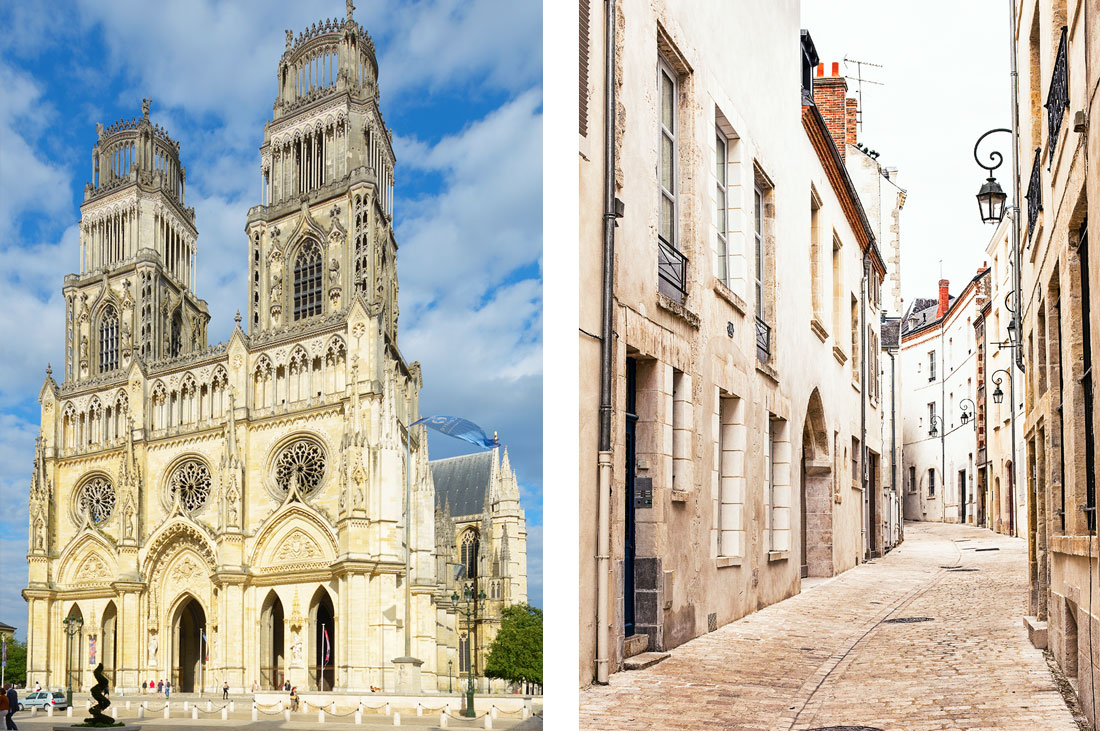
Photo: StockphotoVideo/Shutterstock (left)
Once you’ve walked around the narrow streets amongst the familiar half-timbered houses, you will come down to the banks of the River Loire where you will find all the café-boats are moored. You can eat well in such places as the Bateau Lavoir Orléans Chatelet with such dishes as foie gras, steaks, mussels, shrimps, and delicious desserts on offer. The average price for two is around €70.00-€80.00
Where to stay
Odalys City Orléans Saint-Jean
Aparthotel Adagio access Orléans
- Getting there: by train from Bercy station in Paris. The journey time is around 1.5 hours and costs around €27.00
- Why visit? Here you will see the world’s longest aqueduct which is still used by the shipping
Not many outside France have heard of this small town in the department of the Loire, but it is definitely worth a visit. The main traditional sight in Briare is the Église de St-Étienne dating back to the 19th century. Pay particular attention to the original ceramic features on the church’s façade and, if you decide to go inside, the rich mosaics. Briare is famous for its ceramics, which you can find out more about in the Museum of Mosaics and Ceramic (€6.00).
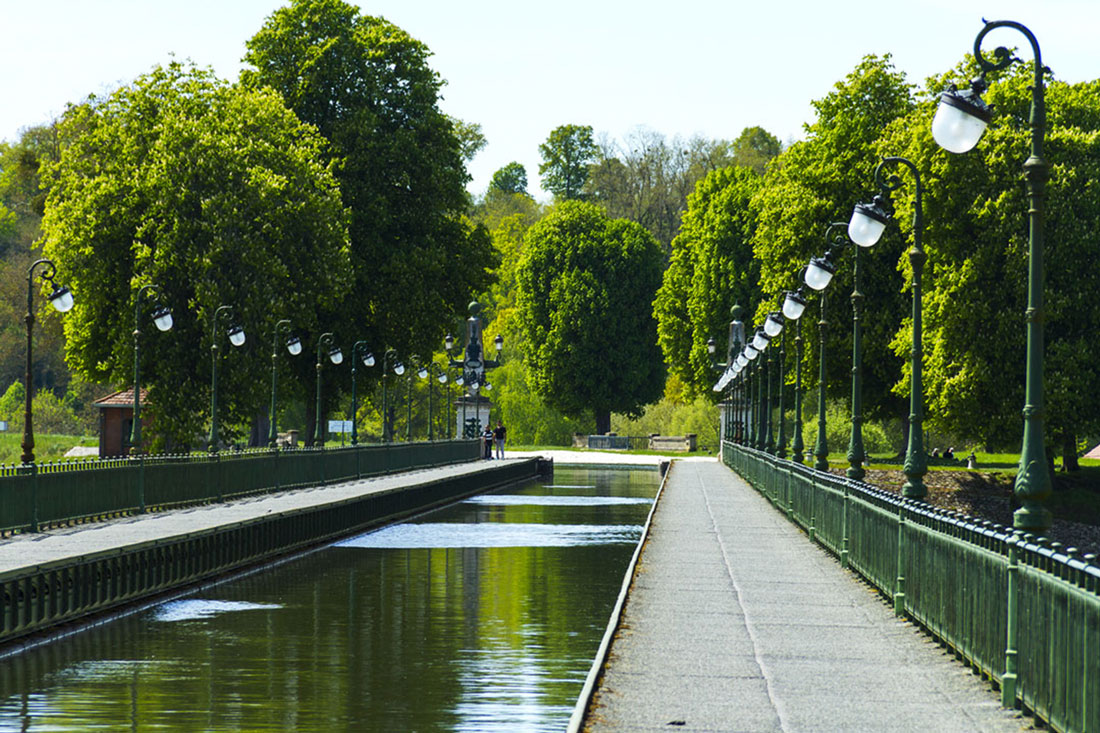
Others are drawn to Briare not for this, though, but for the world’s longest aqueduct. This 6m wide bridge crosses the Loire and is 662m long. Leisure barges and small boats sail over the bridge via the canal, which is less than 2m wide. The view is highly unusual and very photographic!
Strolling around Briare is very pleasant, especially as you admire the boats and other craft on the Loire. The town also has its own Rilato Square with a bridge of the same name. It doesn’t look much like its Venetian namesake, but it’s funny to think about the coincidence.
Once you’ve finished your walk, you can grab a bite to eat in one of the local restaurants, especially one of the traditional French ones like the Bord d’Eau with its great selection of dishes (steak, pâté, etc) where a meal for two will cost around €50.00-€60.00.
Where to stay
This list is, of course, by no means exhaustive. France is the most popular tourist destination in the world, so it has much more to offer than just these five towns. Start your journey with the easy ones to get to, and you will see how quickly a love affair with this country can grow.


